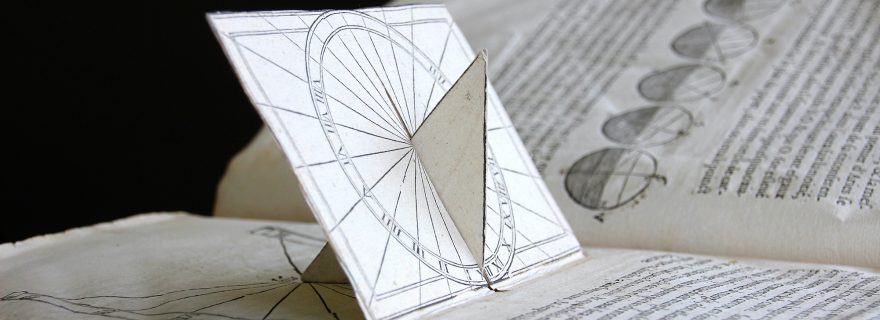Pop-up Book
Studying the world – and the sun – right from your couch.
Pop-up books are older than you may think. This specimen, which was printed in the early seventeenth century, contains several cardboard models that can be unfolded and “locked” into place with clever levers and sliding parts. The interactive 3D-creation is somewhat of a surprise inhabitant of the book, because it concerns a sundial. It is used to illustrate La pratique et démonstration des horloges solaires, a work by Salomon de Caus that was published in 1624. Salomon was a resourceful man. As an engineer he had designed all sorts of pragmatic instruments, including garden tools. He also designed gardens, for example for the palace of Frederick V in Heidelberg – a garden so impressive it was dubbed the eighth wonder of the world.
Fascinated by design and machines, Salomon started to translate and publish ancient Greek texts about machinery. He turned his publications into Do-It-Yourself books by inviting his readers to recreate the instruments and machines contained on their pages. It is in this spirit that this 1624 publication should be understood. The book contains several types of sundials, all containing moving parts made out of cardboard. The reader was to observe the sun, put the book in the correct position, and undertake empirical research based on elevated pieces of cardboard. The result is an early pop-up book as well as a creation that reflects the increasing curiosity for the natural world that readers were developing when this publication came out. With a book like this everybody could explore the world – right from the couch.
Leiden, Universiteitsbibliotheek, 676 A 6 (Parijs, 1624). Photo by the author.
On the author: Book historian Erik Kwakkel was appointed Scaliger professor at Leiden University Libraries and the Leiden University Faculty of Humanities in December 2016. Kwakkel is a researcher and lecturer at Leiden University.


